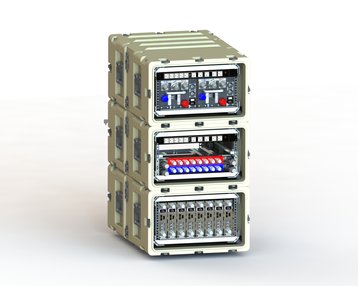We all think we know what edge computing is. Resources have to be close to sensors and end-users, to handle the volume of data demanded by real-time Internet of Things (IoT) applications. But what does this mean in practice?
On one hand, networks will become crucial; but on the other, the applications and edge devices using those networks will also be vital, so the players from all sides of the infrastructure industry will have to collaborate, in accordance with their strengths. DCD’s Edge summit in Dallas earlier this year heard some clear indications of how that compromise will be reached.
The edge power dynamic
Networks will come to the fore because wireless bandwidth is scarcer at the edge. The finite capacity of a wireless link will be more important than the ever-increasing power of processors. Caroline Chan, Intel’s vice president for 5G, previously told us: “You have Moore’s law; we have Shannon’s” (DCD 24. p38).
Telecoms companies will have more sway, as cell towers are the sites where limited wireless networks meet the much higher capacity of fiber: “What we see is a shift in power back towards the telcos,” said Cole Crawford, CEO of Vapor IO.
“What drives a prime site?” asked Alan Bock, VP of corporate development at Crown Castle.
“You need a location near a substation and near fiber.” Crown Castle owns 40,000 cell towers and will be adding micro data centers based on Vapor’s eponymous “chamber” enclosure to offer localized, small-scale edge colocation.
Other telcos will offer micro-cells within buildings. “We are supporting the densification of wireless networks, with small cells based on distributed antenna systems inside buildings,” said Cliff Kane, co-CEO of New York fiber network Cleareon. “We can aggregate traffic and feed it back through fiber.”
The edge transformation will be driven partly by users handling transactions on their phones while on the move, said Eddie Schutter, head of critical infrastructure at eBay: “That requires ubiquity of networking and access to stored data,” he said. “You need connectivity, you need speed, and then you need a user experience to keep your customers.”
This edge will be more distributed than anything we’ve built before, and that means humans will be unable to manage it unless it is virtualized and automated - since tasks will be repetitive, time consuming and uneconomical.
Building for scale
Crawford said: “The question isn’t about how you manage 40 sites, it’s how you manage 40,000 sites. You can’t solve that by putting a person in front of a spreadsheet, you have to start doing site selection algorithmically.”
Edge will also be more flexible than today’s networks: “We have a business based on long-term customer contracts,” Kane said. “We are looking to transition that into something else.” Customers used to get an Ethernet circuit for one to three years; now they want it for an afternoon.
Schutter agreed: “The only way you can scale is to deploy virtualization in a way that gives you the dynamic orchestration you need, where businesses need to be connected.”
Connected cars, augmented reality (AR) and virtual reality (VR) are the three most-often quoted applications making big demands of edge networks. All three require fast round-trip response times. Vehicles may need to refer to networked resources while taking real-time evasive action, while VR and AR equipment must show a realistic response to users’ movements, or else the inner ear will detect a lag.
“Connected cars need a four or five millisecond round-trip time,” Crawford said. “You have a sub 5ms decision time, so you need to have GPUs very close to that car, so data can get to that car and back. Likewise, if you have anything more than a 5ms round-trip [for VR data], you will feel ill.”
Network companies have a good position as the edge emerges, but they will need help. Mobile network providers have become expert at building backhaul capacity quickly enough to meet expanding demands from human users. The trouble is, the automated applications of the new edge will demand scaling at a much faster rate.
“The edge is the biggest part of the network. The biggest part of spending is always going to be at the edge,” Bock said. But that spending will be partly justified in getting more revenue out of the already-existing backhaul networks.
“Carriers, to their credit, have been very good at deploying capex and building networks,” Bock added, but argued that the longhaul part of the network will be small compared with the edge: “There will be more capital spend on the edge in the next few years than has been spent in the entire history of telecoms. It’s crazy amounts of money.”
Working together
If all this is going to happen, the infrastructure industry will have to find ways to reduce that cost by sharing investments, the panel said. The technology to do this will include network functions virtualization (NFV), which allows multiple service providers to share the big, fat, dumb network pipe, and offer revenue-generating services, with much lower capital investment.
“We know for a fact that margins for spectrum are going away,” Crawford said. “What we are seeing is innovation in software, while managed network operators (MNOs) are seeing innovation in capital reduction, which benefits everybody.”
Data center operators and telecoms operators are already building digital infrastructure. Both operate in a margin-based business, but network builders are experts at adding capacity, while data center operators excel at reliability.
It’s not exactly clear what form the hardware required by the edge will take, but elements of both will be there, along with entirely new ideas designed to combine these strengths. The discussion has begun - DCD will be following its future direction very closely.
This article appeared in the December/January issue of DCD Magazine. Subscribe to the digital and print editions here:



